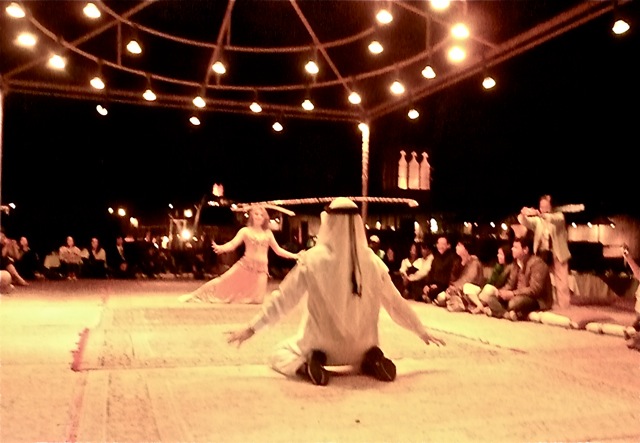Written by Robert Wu for his family and friends
—————————————————————————
Egypt exists because of the Nile. This life line provides the condition for living in a desert region, and is the transportation artery of Egypt.
The water of the Nile is surprisingly clean and clear, even at its middle section at Luxor.
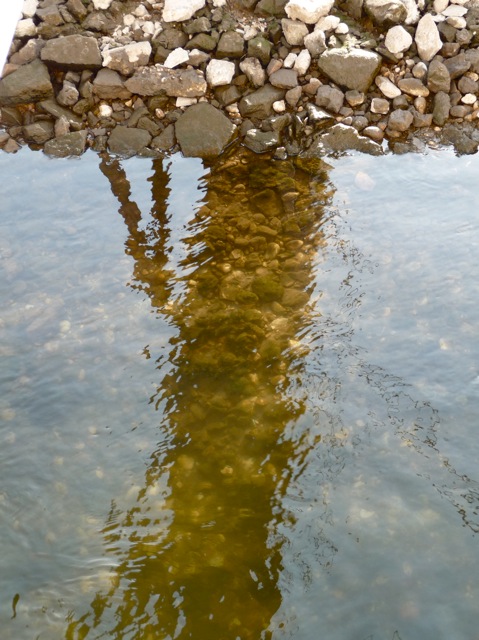
I caught this fleeting misty scene of the Nile one morning.
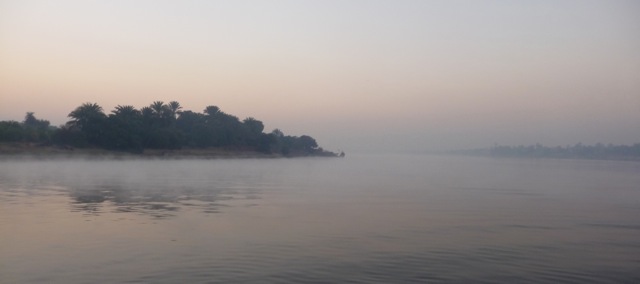
An idyllic scene of the Nile with reeds, palm trees, a fishing row boat, and a white crane.
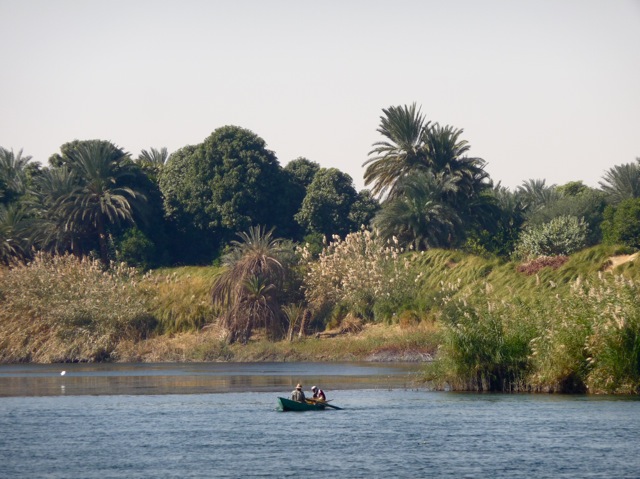
Egypt’s agriculture relies on a narrow strip of farmland a few miles wide on both sides of the Nile. Beyond the strip, endless bone-dry desert is inhospitable to man and beast.
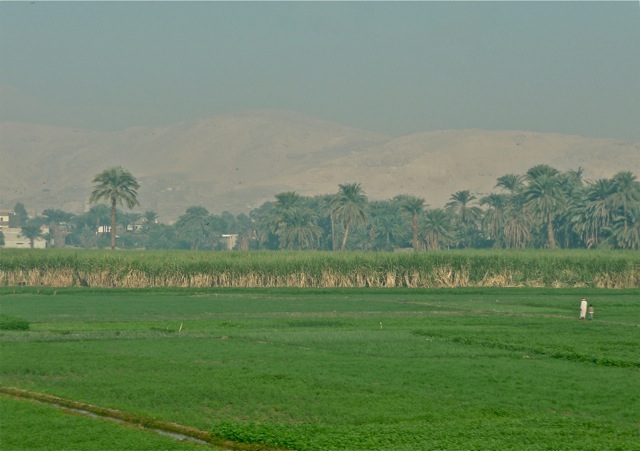
In the desert, a lone shrub is a dot of green in a barren sea of sand.
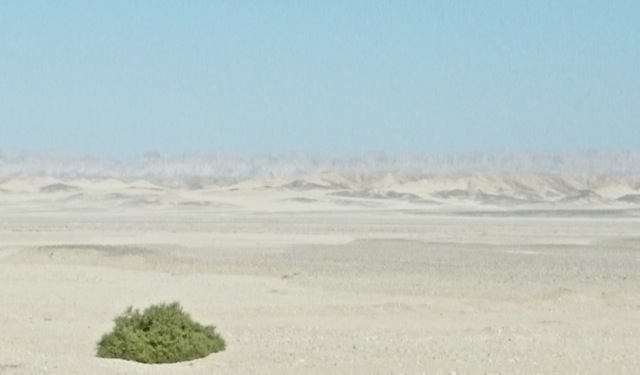
After the Aswan Dam was built in 1970 to generate electricity, the Nile ended its annual flood which spread fertile silt to the farmlands. Japan contributed many floating pumping stations to irrigate the riverside farmlands and made sure everybody knows about its gifts.
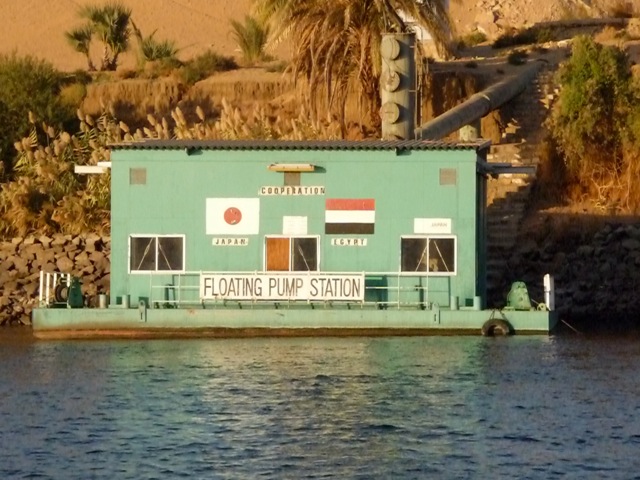
The ancient Egyptians were a mixed race of Nubian and semitic peoples, and they created a brilliant civilization 5,000 years ago. Here, two handsome Nubian men talked happily on the Upper Nile (southern Nile) waterfront.
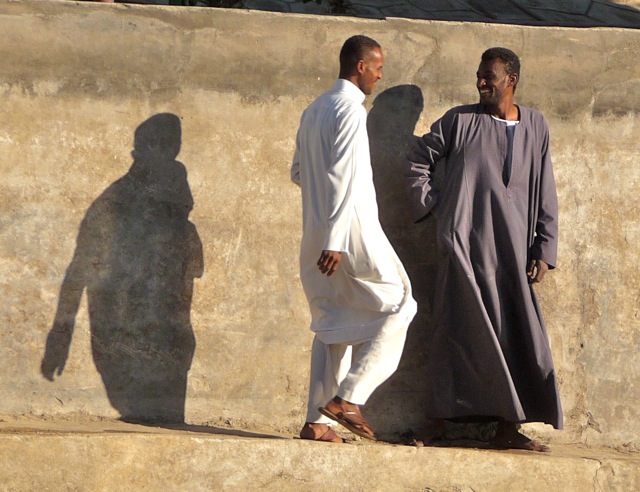
Egypt lies in the middle of a big desert and receives very little rain. Its sky is usually cloudless and the visibility is usually excellent.
Flying to Cairo over the cloudless Red Sea and desert provided vivid views of ships and landscape below. This clear view ended abruptly by the smog over Cairo.
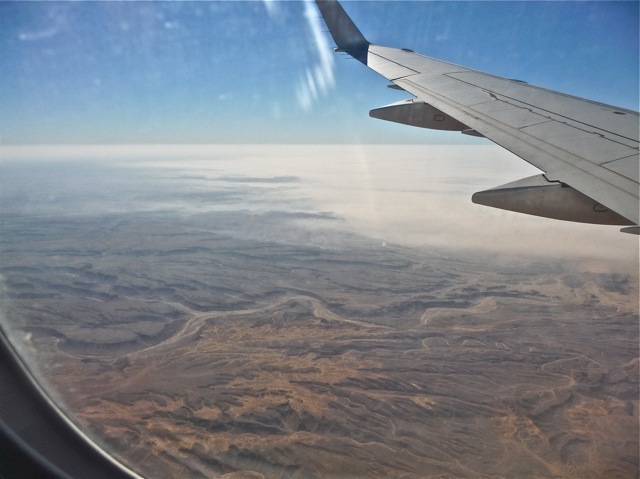
Even the tall pyramids had trouble poking through the smog.
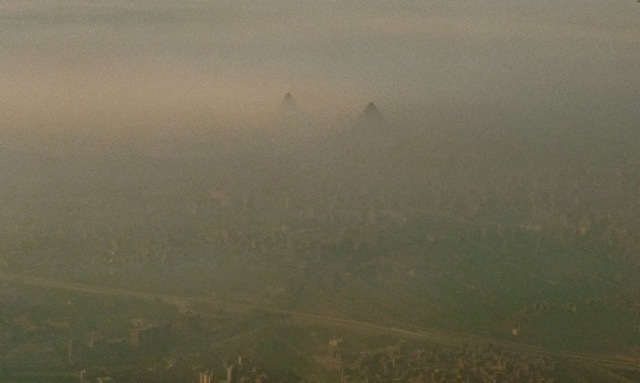
As Egypt’s economy depends heavily on tourism, it is very protective of its tourists after terrorists killed some tourists. The authority tries very hard to deter such attacks.
A convoy of dozens of buses travel for 6 hours under armed escort through a restless region.
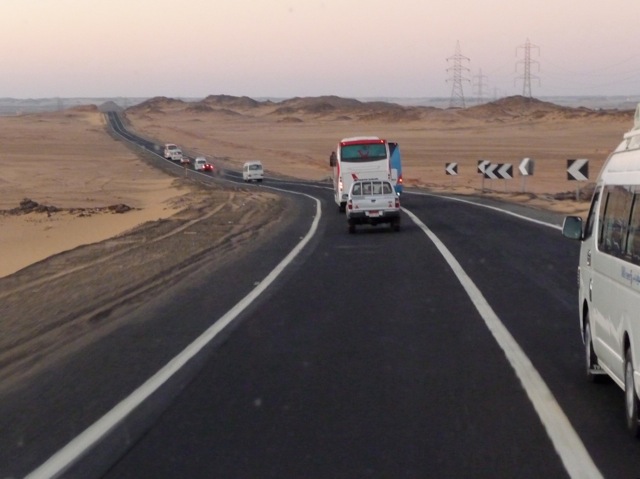
Police presence was everywhere. Check points were erected every mile along one highway.
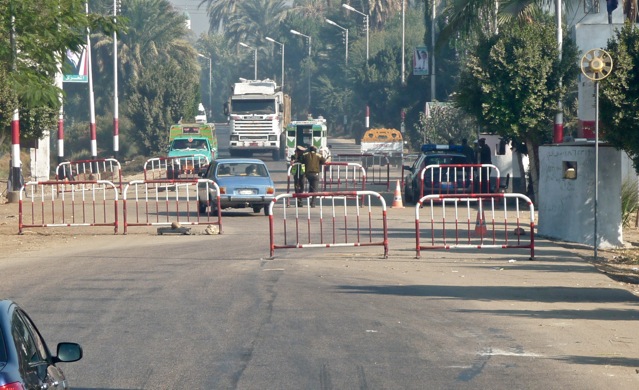
Police sentries stood behind rolling armor shields. They looked like they expected gun shots at any minute.
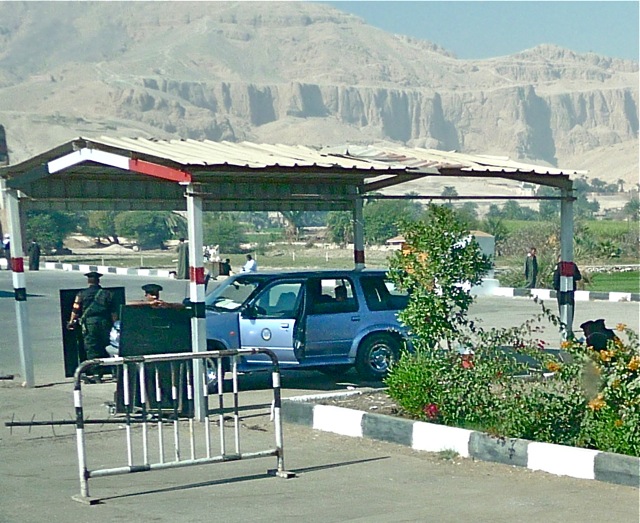
Civilian militia augmented regular police at check points. I had not seen so many people carrying weapons since the Philippines where armed guards stood outside every kind of establishment, including McDonald’s hamburger joints.
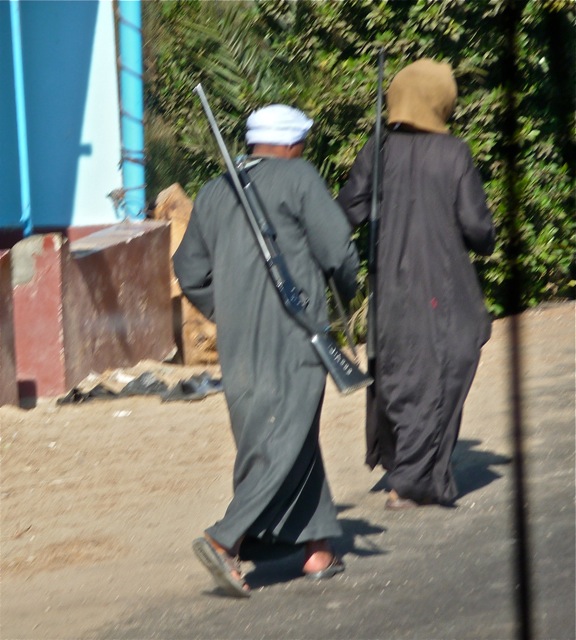
The military presence was palpable. The Cairo Airport is also used as a military airport. Hardened hangars next to runways housed jet fighters.
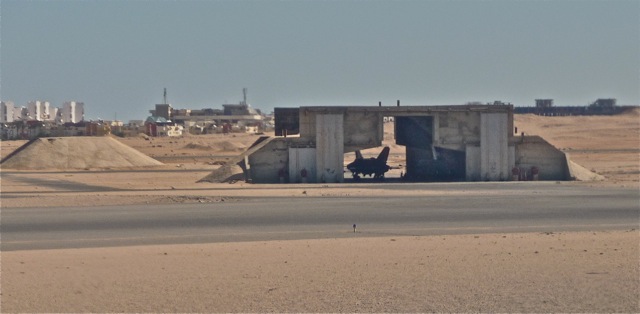
Egyptian people are very civic minded. This traffic accident happened a few minutes before our arrival, and common people ran from all directions to offer help. Some pried open the door of the white car on the left to extract the passengers, others pushed the dark colored car on the right to open up a path for us.
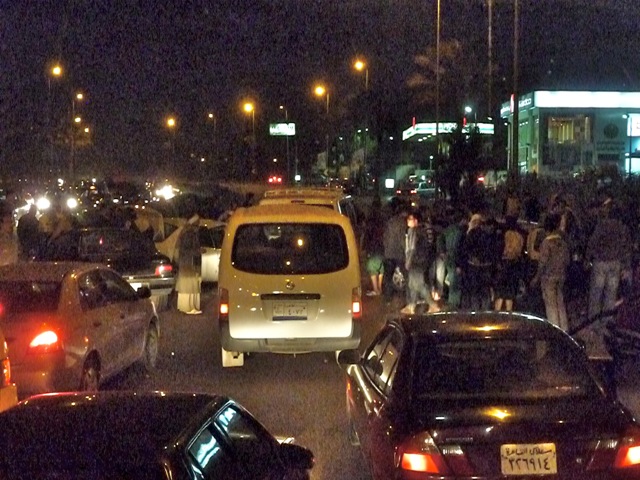
As in many third world countries, some Egyptian vehicles carry way too much load. This van looked ready to topple over from its top heavy burden.
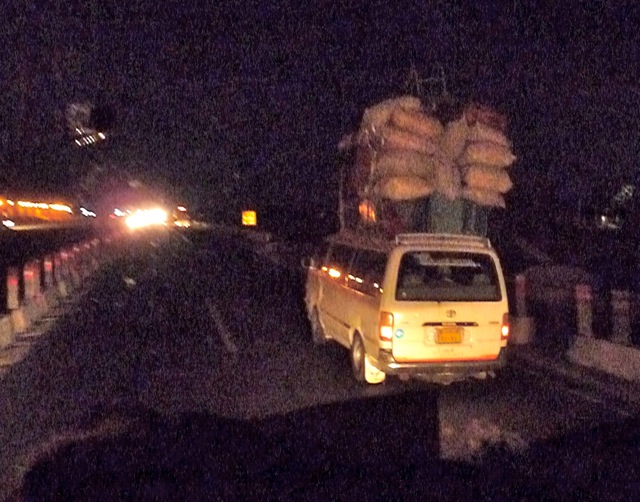
Egyptian food, at least those we ate for 10 days, were not particularly tasty. One memorable food was the light, thin, puffy bread that appeared translucent in the sun light.
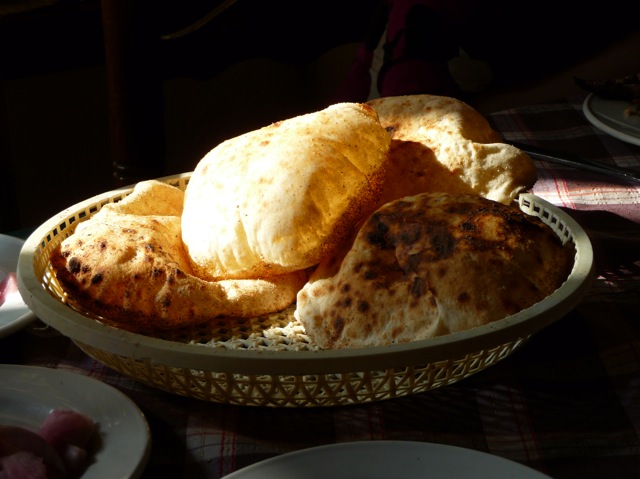
I could not resist hamming it up and pushed two colossi apart.
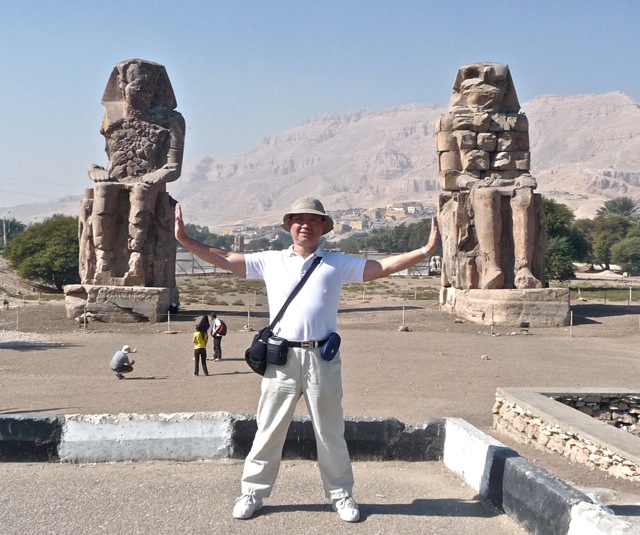
Rural folks built these elaborate towers to house pigeons. The pigeons are eaten and their feces are collected as fertilizer.
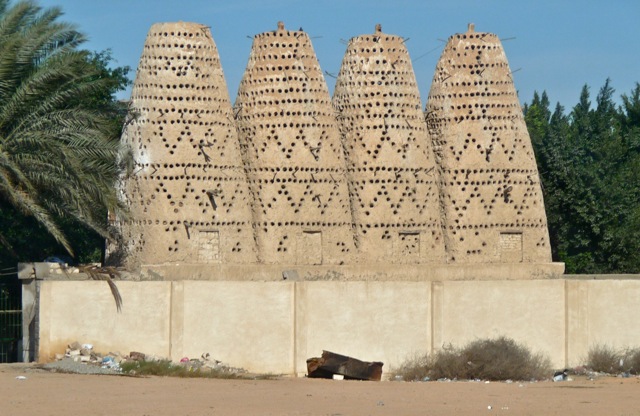
Egyptians appear to be neat and clean people. One exception was this garbage-clogged canal where many people fished with hooks and nets.
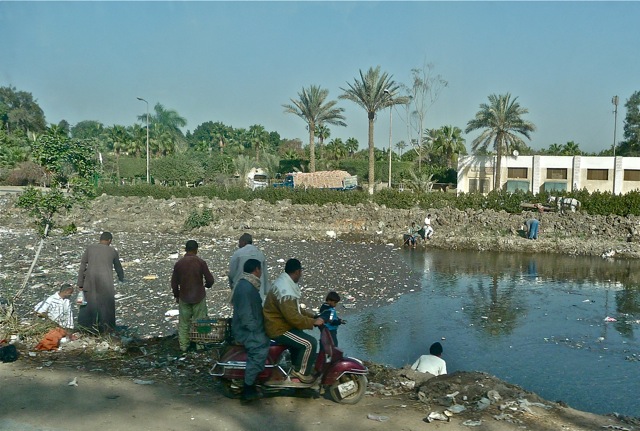
Another exception was this middle-class back street where garbage was strewn all over the sidewalk.
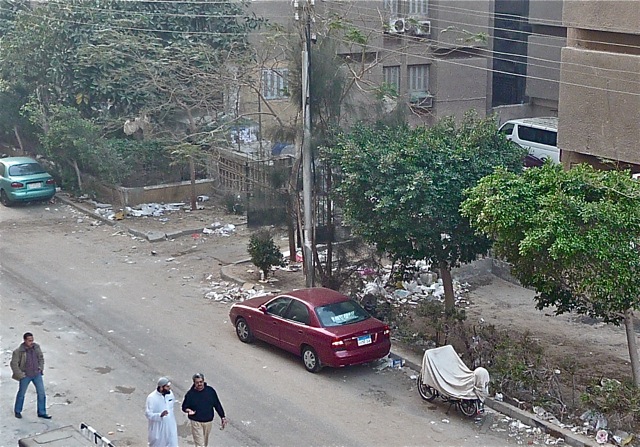
Stores were very neat as the owners took the trouble to spruce up the merchandise display.
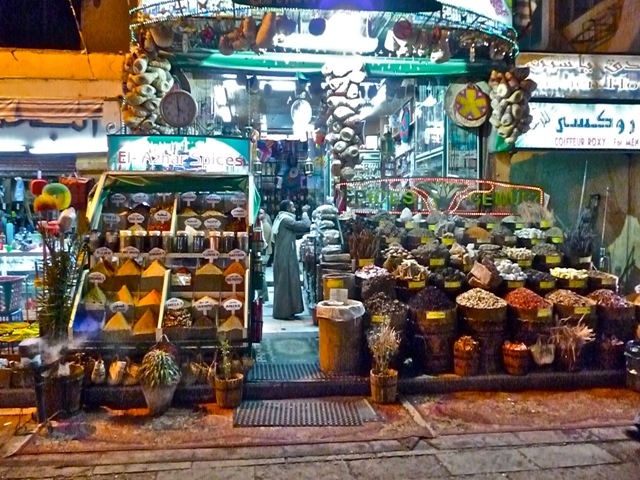
Cafes are popular establishments. They are on the seaside, busy city streets, and village sidewalks. This village cafe used an eclectic collection of furniture, but the patrons enjoyed the cafe experience just as much.
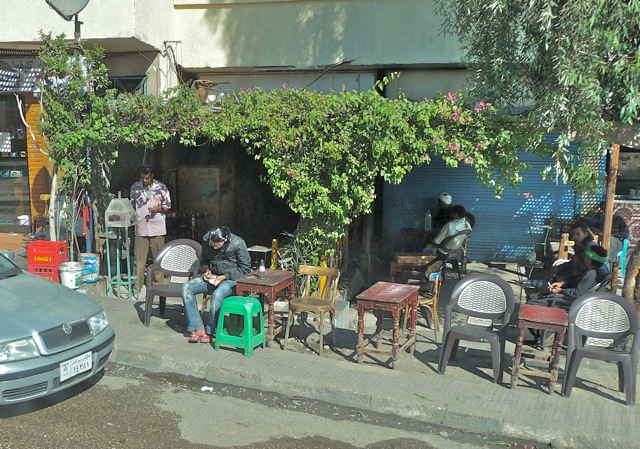
Many conservative Muslim women wear black robes or burqas. This stall sold black robes with varied decorations.
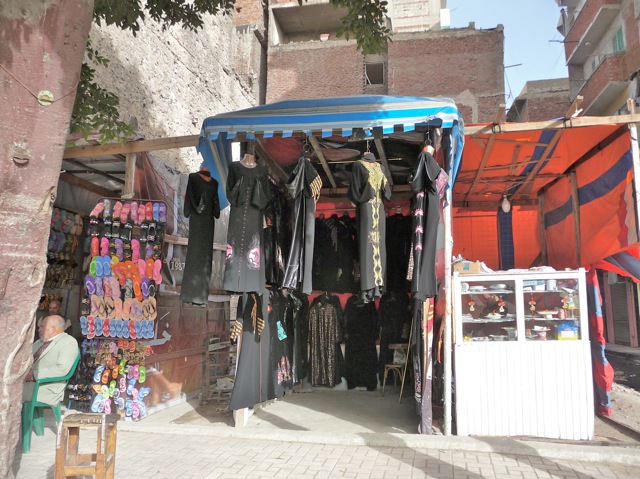
Just a few steps away, sexy underwear were displayed for sale.
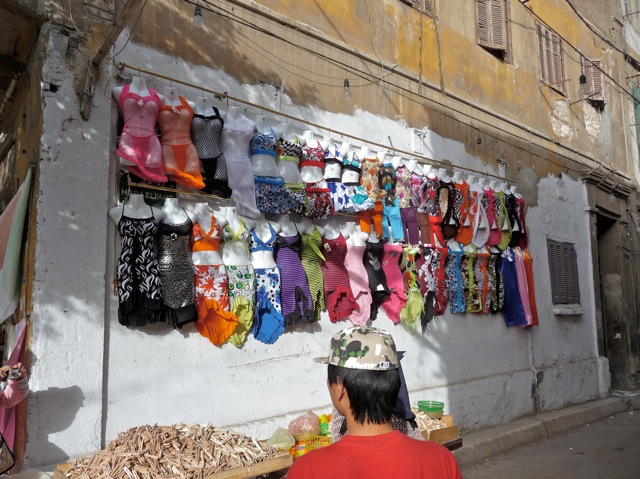
Most houses have large satellite dishes on their roofs, crowding the skyline.
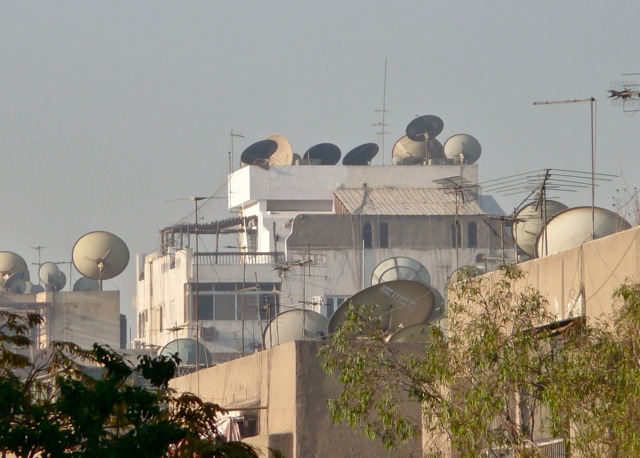
Many houses in Cairo appear unfinished with reinforcing rods poking through free standing pillars. Some apartments of these houses are finished and occupied, while the rest of the buildings remain vacant and unfinished. Perhaps as in India, unfinished houses don’t have to pay taxes; and unfinished upper floors qualify these houses as being under construction.
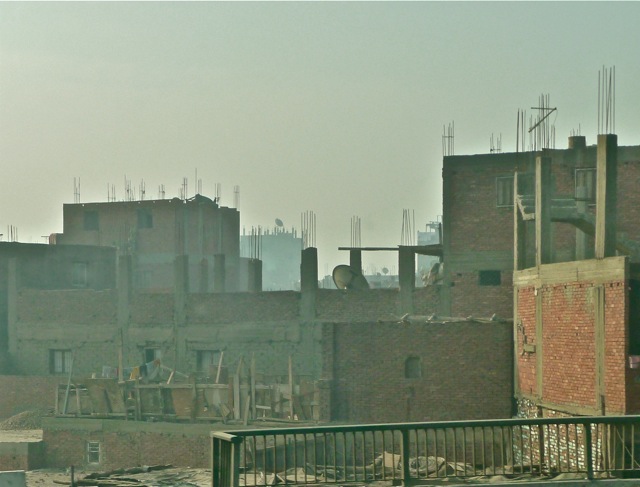
The Red Sea resort town Harghada appears to be over-expanded and bankrupt. Half finished houses and hotels sit on empty lots for miles around.
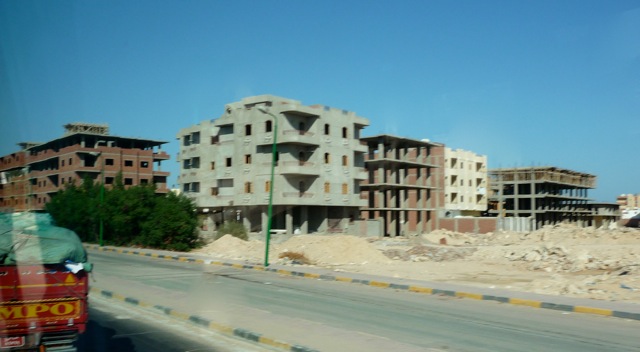
Nevertheless, we enjoyed our stay on the Red Sea.
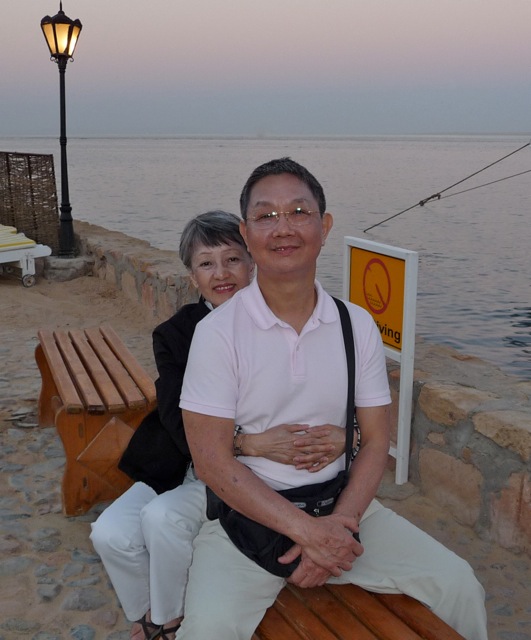
Beyond Egypt, Dubai continues to build like crazy despite its recent financial crisis. The tallest building in the world, silvery Burj Dubai, changed its name to Burj Khalifa after the rescuer of that financial crisis.
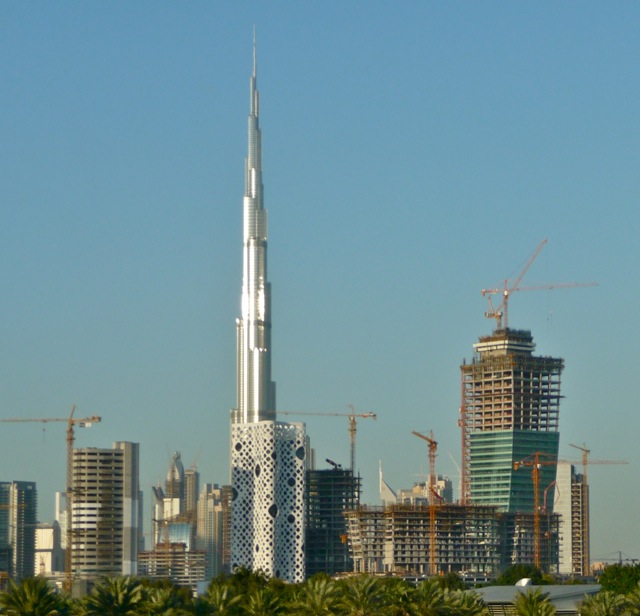
We visited the world famous Egyptian Museum in Cairo. Photography inside was strictly forbidden, and our cameras were checked before entry. Outside the museum, Sally and I posed in the brave warrior stance.
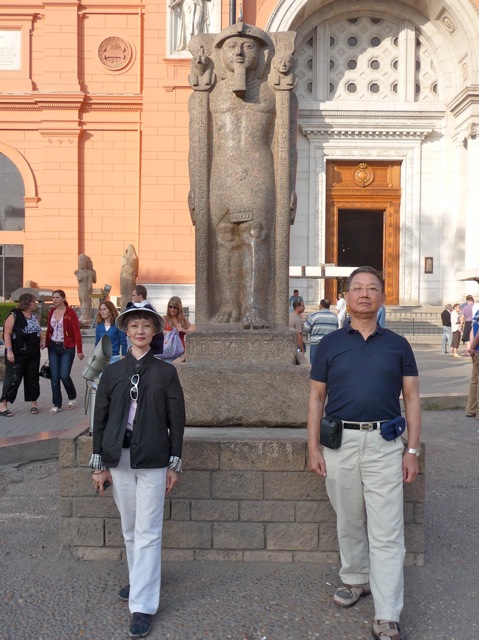
For the last 5,000 years, Egyptian sphinxes were made initially with lion’s head, then ram’s head, then Ramses II’s head. In 2010, a new sphinx was made with Sally’s head.
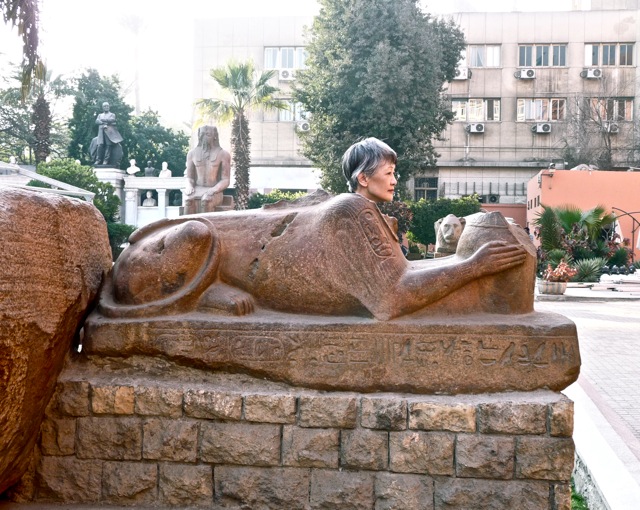
On the last evening, we ate dinner in the desert. I dressed in Arab garb and danced with a belly dancer. I received standing ovation for my outstanding and daring performance.
